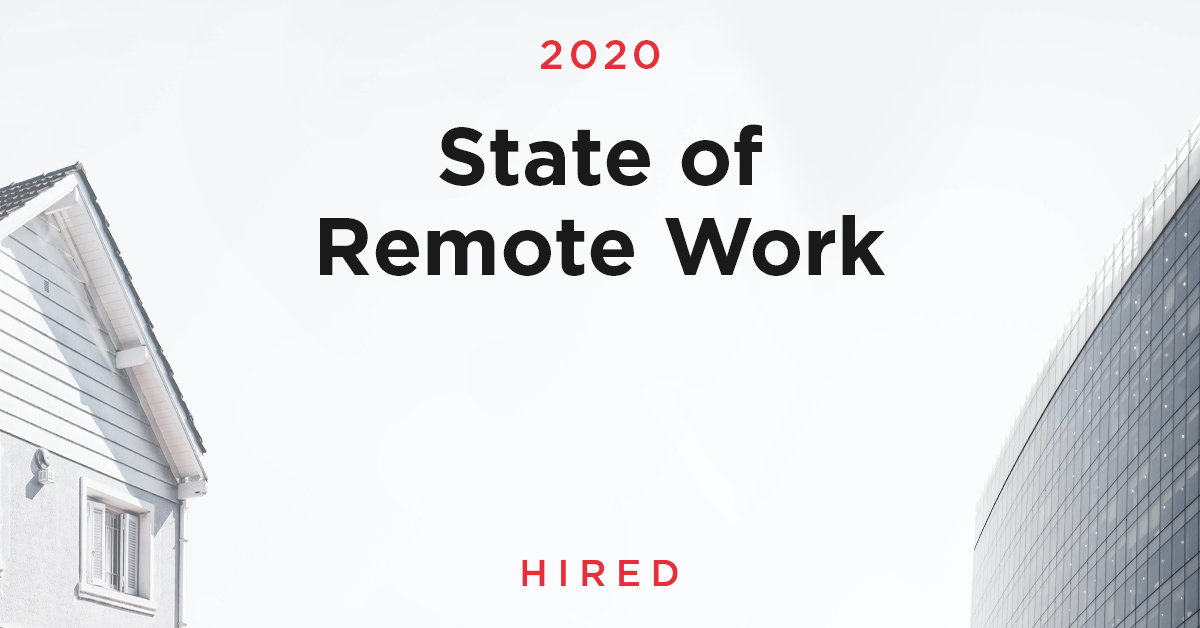
Releasing our First: State of Remote Work Report: Unlocking Opportunity
Remote work has quickly gone from buzzword to reality for many professionals — especially those in the tech industry. Alongside rapid changes in the way we work, organizations have begun to reconsider what matters most for both business continuity and giving their teams the flexibility they require to do their best work. The perception of this once “nice to have” company perk is shifting towards becoming a new standard. As companies grapple with how to move their operations entirely online, we decided to dig deeper into how tech professionals feel about working remotely – from the initial interview process to onboarding, daily workflow and virtual collaboration.
METHODOLOGY
This report represents insights from over 2,200 tech workers (software engineers, product managers, designers, and data scientists) across North America and the United Kingdom. In addition, we surveyed 300 companies to understand how they believe remote work will shape their company’s hiring strategy both short and long term.
At Hired, we’re committed to helping everyone find a job they love, and while the world is shifting, we know innovative companies recognize the importance of staying ahead of the curve, especially when it comes to one of their most valuable assets: their people. Through this report, we want to empower employers with valuable insights into how they can establish an effective remote hiring process, foster a supportive virtual work environment and create a flexible remote culture aligned with their company needs. Armed with these insights, both tech talent and companies will be better positioned to navigate and adapt to the changes that lie ahead.
To download a PDF version of this report click here
Remote work: From buzzword to realityToday’s most innovative companies know that investing in attracting and hiring strong teams is foundational to not only business continuity but continued success. That’s why, whether you’re building a distributed team or pivoting towards a fully remote workforce, the benefits will definitely outweigh the challenges. As Stripe’s jobs page calls out, their remote positions ‘expand economic access across the globe’ and Invision’s completely distributed company gives their workforce permission to ‘do great work from an environment you’re comfortable in.’ Moreover, 57% of employers we recently surveyed said they believe remote work policies will continue to be more flexible even after COVID-19. As companies become more familiar with the benefits that remote work provides to their business, they will begin to define what “remote” means to them.

When it comes to tech talent, we recently asked them how the pandemic will impact their interest in remote work going forward. Interestingly, we discovered that nearly half (48%) of tech professionals in North America are even more interested in remote work than they were before, and only 5% are less interested in remote work. It’s clear that although many may not have the most ideal work environments right now, their desire to have more flexibility is stronger than ever before.
While there are industries that are experiencing a slowdown, 68% of employers we surveyed said they are still actively hiring, and certain verticals such as e-commerce, cybersecurity, and delivery services are experiencing massive demand they are striving to meet. Since the technology infrastructure of many of these services are mission critical to business success, there is still a strong demand for tech talent. In our recent analysis, we found that 43% of tech professionals are actively searching for a new job, and a full 35% are open to new opportunities. Tech talent in the UK shares the same sentiment with more than two thirds (70%) stating that they are very or moderately open to a new role.
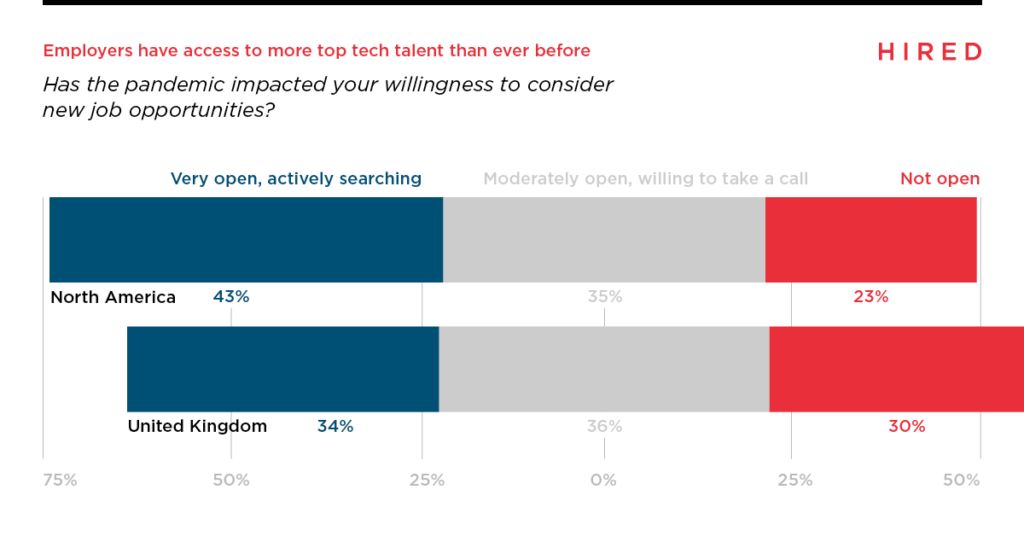
As employers look to diversify their talent pools and have access to more tech workers that better align with their business needs, this presents a huge opportunity for employers looking to attract and hire strong candidates.
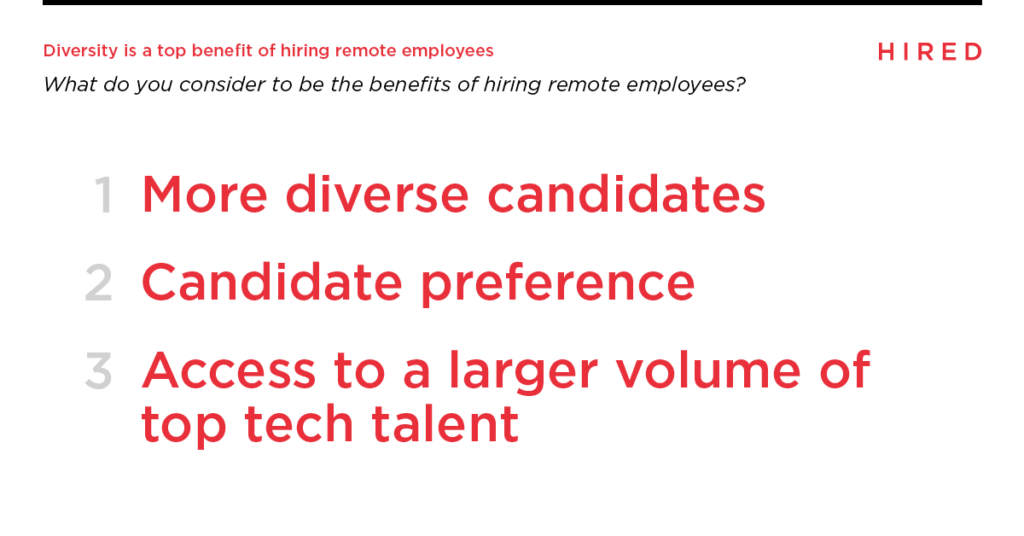
To fully understand the experience of today’s job seekers, we asked them to share how the recent transition to remote work has impacted their job search. While there are positive experiences for some, an overwhelming majority of tech talent reported a lack of remote job opportunities as a critical challenge. This challenge represents a huge opportunity for employers to set themselves apart by leaning into remote work, which gives them access to a much larger talent pool and expedites the hiring process.
Employers are adapting: Reimagining the interview processBefore diving into the nuances of remote hiring from a candidate perspective, we wanted to gain an understanding of how hiring managers feel about the process.
Remote hiring works, but it is not without its challenges
What are the top recruiting challenges your team is facing right now?
1. Onboarding new hires remotely
2. Conducting remote interviews
3. Convincing candidates to take a position without meeting in person
While remote interviews and onboarding can be challenging to adapt to, it’s still possible to develop a world-class remote hiring process that can be just as effective as in person interviews, without sacrificing a company’s candidate experience.
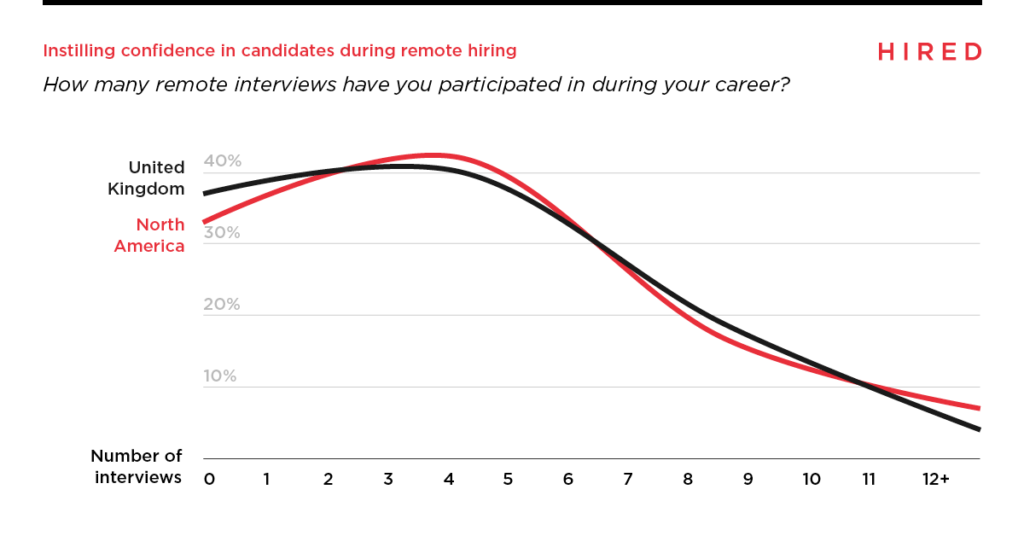
To capitalize on this opportunity and close top candidates, hiring managers should invest in establishing an effective remote interview process that aligns with their company. Not only will this allow employers to streamline the hiring process in the short-term, but it also positions them for long-term success by eliminating the geographical constraints that have impacted recruiting and hiring efforts for far too long.
Despite their limited experience with remote interviews, tech talent don’t seem to be overtly stressed about the prospect of doing them. For employers, there are a variety of strategies to ensure that candidates are set up for success and provided the guidance they need to seamlessly go through your company’s interview process.

With less than 20% of tech talent concerned about video interviews, this is a very positive signal for employers, as it shows that tech professionals are not inherently stressed by the idea of remote interviewing and how it may impact their decision. When it comes to their video conferencing platform of choice, Zoom reigns supreme above all others.

Although tech talent may not be overly stressed about video interviews, we wanted to further understand what some of their general concerns are. We found that regardless of how many years of experience they have, their main concern is not gaining a true understanding of a company’s culture while interviewing remotely.
On their mind: Top 3 video interview concerns
What are you most concerned about during remote video interviews
1. Not gaining a true understanding of a company’s culture
2. Difficulty building rapport with interviewers
3. Running into technical issues
The good news for hiring teams is that all of these concerns can be addressed with thoughtful planning. Taking the time to create digital resources that illustrate company culture will go a long way with making candidates feel confident that they’ve gotten a true picture of what it entails. In order to ensure interviewers have the ability to build rapport, we recommend running mock interviews with various team members and coaching them on how to put candidates at ease and keep conversations flowing organically. This will pay dividends with not only making candidates feel comfortable, but also ensuring your teams are effectively communicating during video calls outside the hiring process.
And when it comes to avoiding technical issues, hiring managers should provide candidates with a document that outlines all of the system checks they should do to avoid any issues, and ensure they have the phone number for everyone they’ll be speaking with in case they lose the connection and have to call back.
Establishing and executing strong remote interviews might seem daunting, but we encourage companies to view this as an opportunity to stay ahead of the curve and take advantage of benefits unlocked by hiring remote tech talent.
Your Complete Guide to Designing a Successful Remote Interview
Actionable strategies and tactics for hiring teams
Free Guide
Aside from your life partner, choosing where you work and invest your time is one of the most important decisions that you can make for both yourself and your family. So, as companies invest in establishing remote hiring processes, we wanted to take a pulse on how candidates feel about taking that ‘virtual leap of faith’ without meeting anyone face to face.
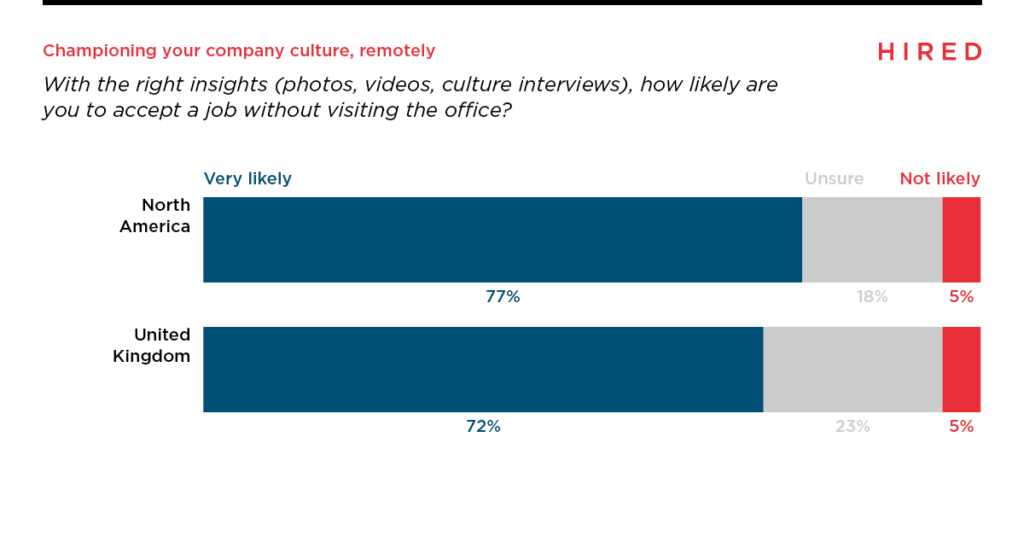
Our survey found that contrary to what you might assume, today’s tech workers are open to joining a new company after an entirely remote interview process. This is a great signal for employers, as the investment in the recruiting process should be focused on recruiting the best candidate and ensuring you are able to close them — regardless of physical location — when the time comes.
This sentiment holds true when it comes to accepting a job without meeting their future coworkers in person for tech talent in both North America and the UK.
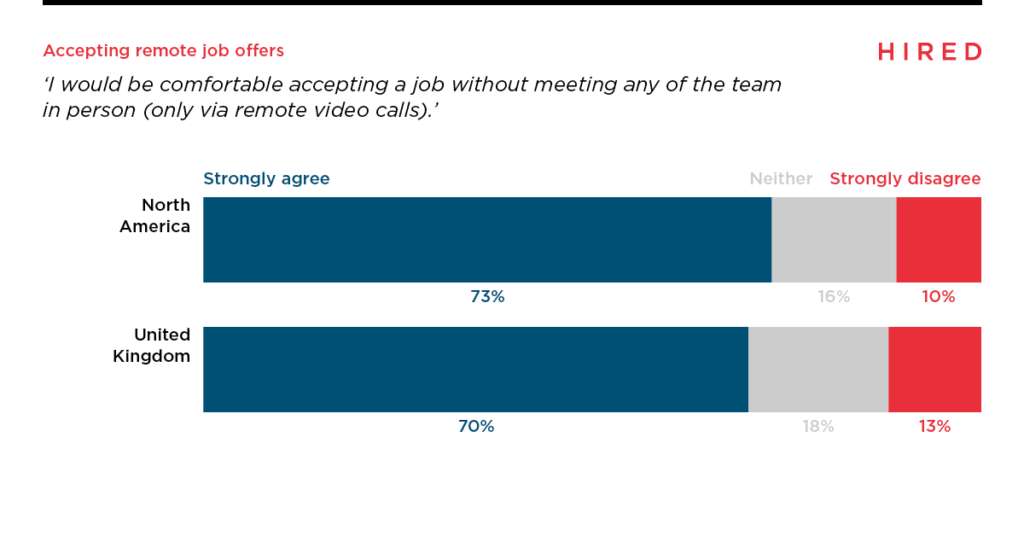
With regards to remote onboarding, 97% of respondents said they are either very open or somewhat open to remote onboarding at a new company, so long as they have the right resources and support. This should give employers peace of mind knowing they don’t have to halt tech hiring for fear of pushback or hesitancy from tech talent.

When asked what would constitute the right resources and support, tech talent commonly shared the following:
• Comprehensive onboarding plan that includes timelines and topics
• Training session with the IT department
• Role specific onboarding
• Designated mentors or an onboarding buddy
• Project management tools and best practices
• Documentation in a company wide wiki
• Internet and workspace allowance
While recruiting — especially when remote — it’s important to have a strong understanding of what matters most to tech talent beyond the interview process. Because as the workforce becomes more flexible in the way it works, a successful and productive workday means something different for everyone.
So, we asked tech professionals what being productive while working remotely means to them, and here’s what they shared.
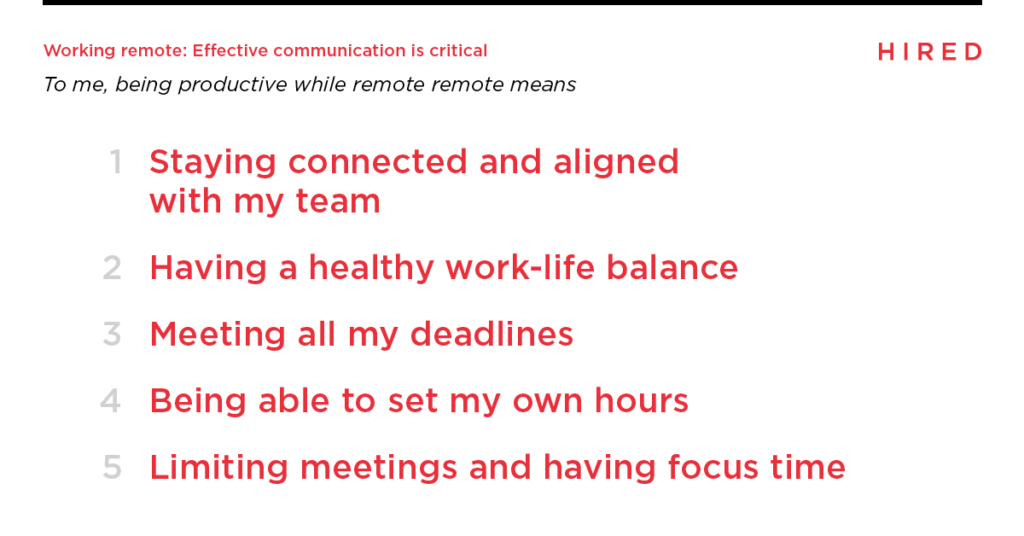
While largely open to remote work, the tech professionals we spoke with reported collaborating effectively and building positive relationships can be difficult in a remote setting. This suggests that employers need to invest in digital collaboration and communication tools, and make concerted efforts to bring distributed teams together in virtual workspaces to foster collaboration across their organization.
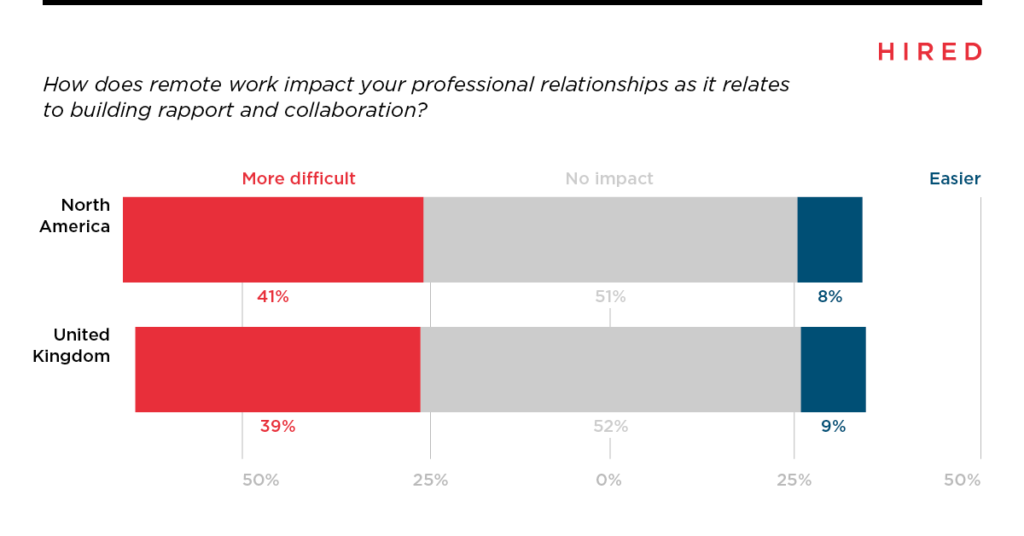
In addition to investing in these tools, it’s also critical that employers set clear expectations for general guidelines around responsiveness and communication while working remotely.
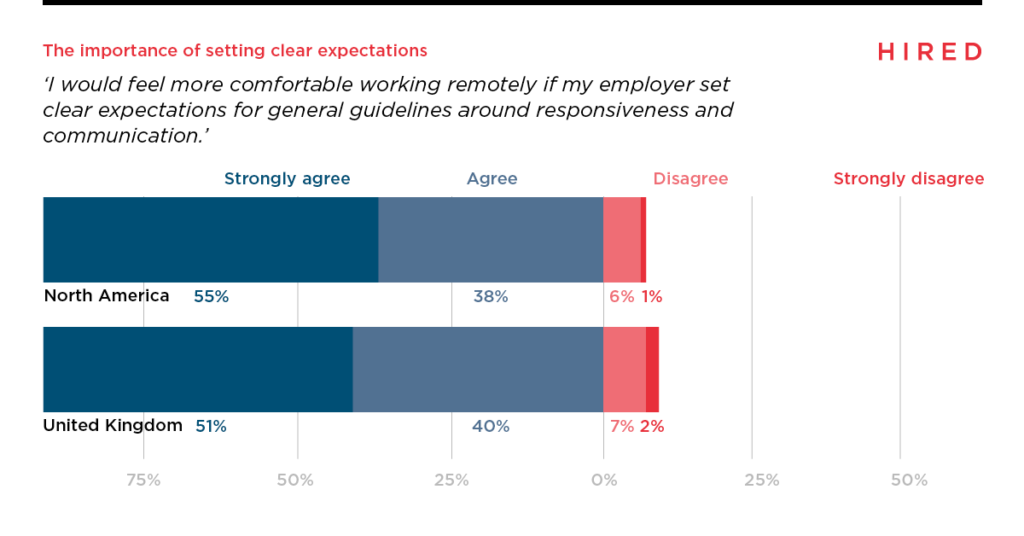
That said, tech professionals are divided in how concerned they are about being constantly “on call” while working remotely.
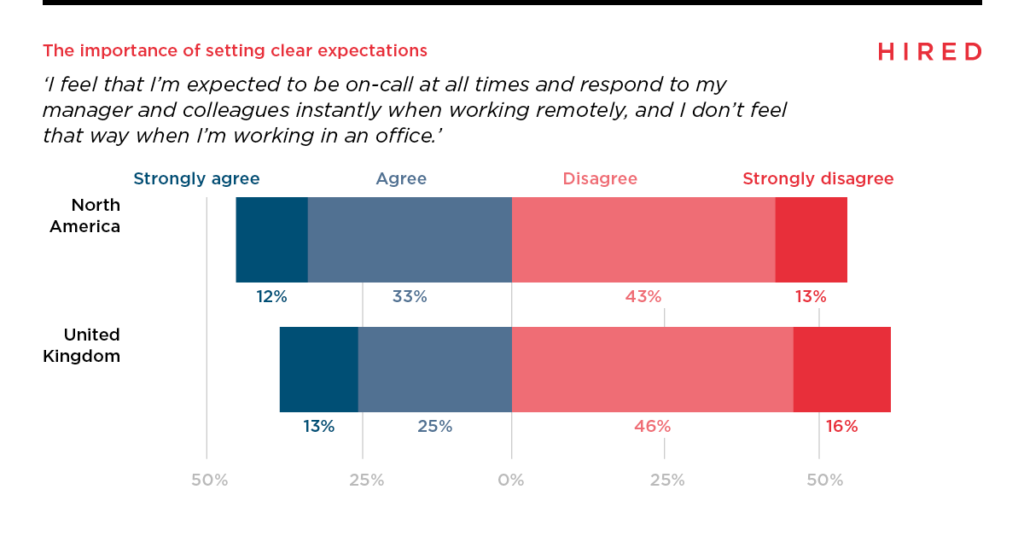
To gain a deeper understanding of what effective expectation setting really means, tech professionals shared what companies should be responsible for outlining to avoid confusion or frustration on either side. It boils down to the following:
• Response time for communication
• Work hour expectations and availability
• Identifying key communication channels
• Clear project timelines and goals
• General meeting cadence (team standups, 1:1 with manager)
The working dynamics for distributed teams will vary based on your company’s approach to flexible and remote work. In an effort to maintain collaboration across different teams and for employees to feel comfortable raising challenges they may face, we wanted to understand how comfortable tech professionals are when it comes to having sensitive conversations in a remote setting.
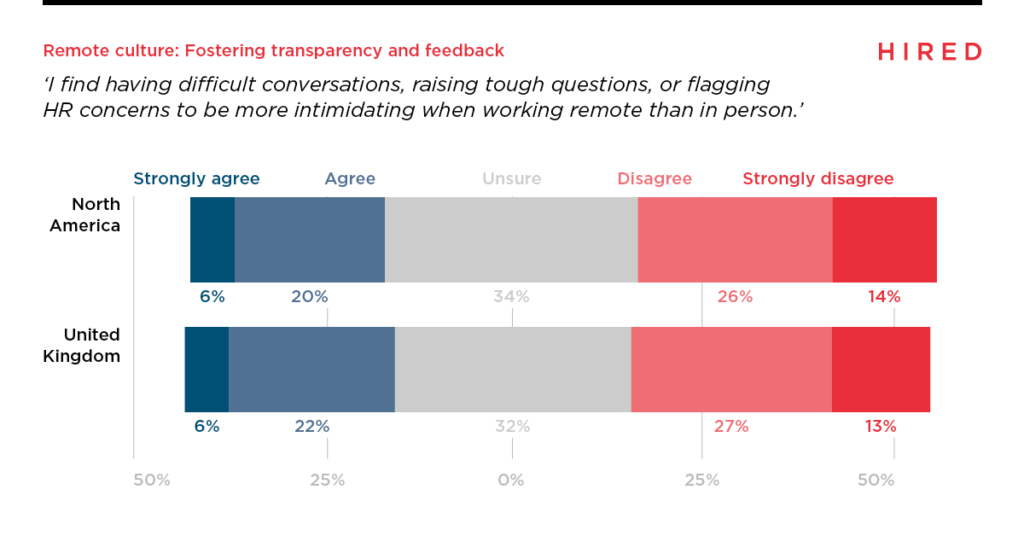
We also noticed significant variation with how they feel about being seen and valued when they’re not working together in a physical office, and how that might impact their professional development.
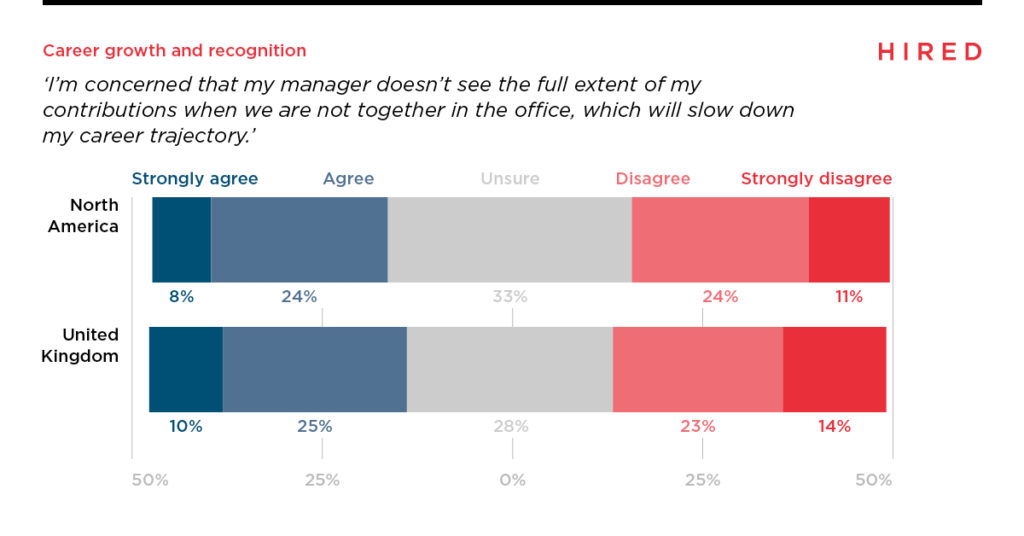
For distributed and remote teams to be successful, it’s essential to invest in building rapport with those you work with (or even those you don’t work with often), have frequent check-ins and make sure there is a dedicated point person available for every team member to go to with any concerns. It’s also important to acknowledge everyone’s contributions on a regular basis to keep morale high and prevent burnout, which is something companies should be doing in any setting — remote or otherwise.
These variations in workplace dynamics indicate that there is no “one size fits all” approach to nurturing and supporting a remote team, as every individual has their own unique feelings and preferences. Companies should look to their core values as an anchor to create work dynamics that work best for their distributed or remote workforce.
ConclusionWhile most businesses may not have planned on shifting to remote work and hiring, it’s become an undeniable reality. The world’s savviest companies are staying ahead of the curve by investing in their remote work processes now so they have a well-oiled machine in place to carry them through this next decade. Many businesses will find that there’s a certain type of remote work that suits them best — whether that’s having distributed teams, but in the same time zone, state, or county, or having a fully remote global workforce — it’s all about finding the right balance for your company’s needs.
Here at Hired, we are inspired by the willingness of tech talent across the globe to embrace the opportunities that remote work presents — both in the short-term and the long-term. With thoughtful planning, and the right tools, innovative companies have an opportunity to tap into a pool of tech talent with no geographical limitations and foster an exceptional remote work environment that will benefit their brand for years to come.

